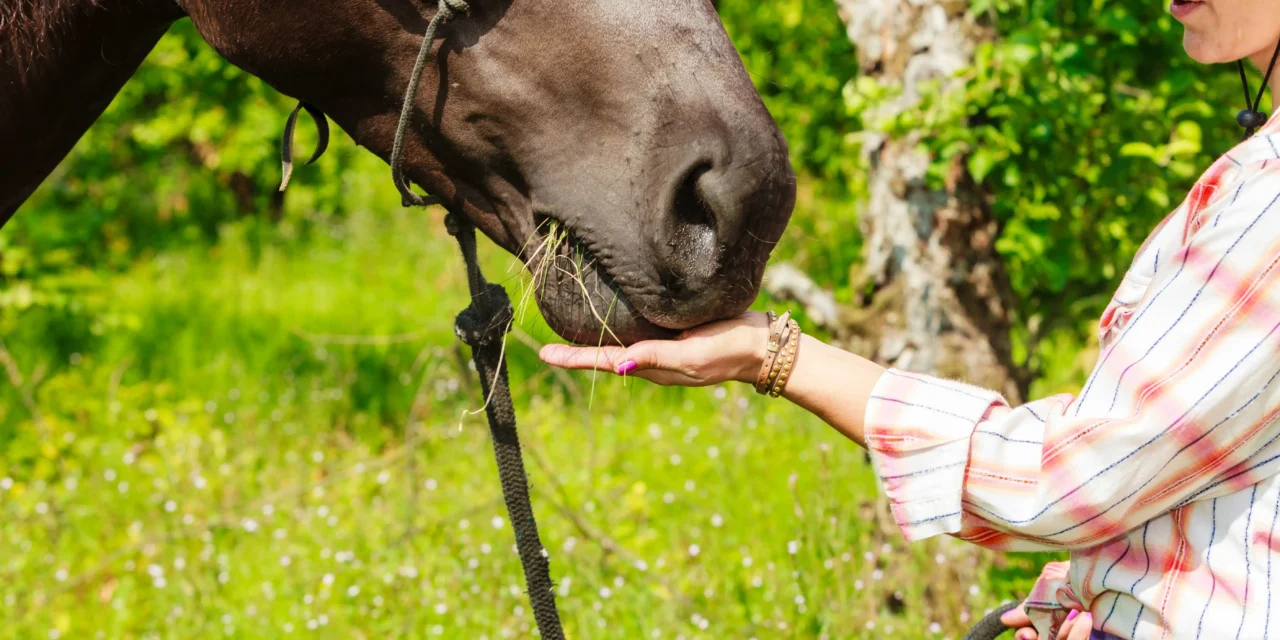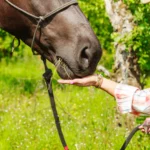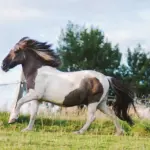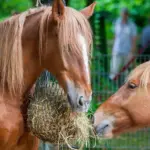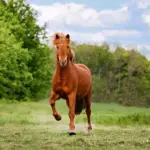Key points at a glance:
- The click is a precise marker for desired behaviour
- The click becomes a promise of reward through learned association
- Every click must be followed by a reward
- Clicker training allows for more precise training than giving a reward directly
- The click itself is not a reward but a means of communication
What exactly is clicker training?
Clicker training is a scientifically proven training method based on the principles of classical and operant conditioning. At its core, it’s about telling the horse precisely which behaviour is desired. The characteristic click acts as a marker — like a camera flash capturing the exact right moment. It tells the horse: “That was exactly right — and you’ll get a reward for it!”
The key difference from other training methods lies in the precision of communication. While direct reward with treats often leaves several seconds between the desired behaviour and the reward, the click marks the exact moment. This allows the horse to learn much more clearly which specific behaviour is being rewarded.
The magic of learning through association
Before we can begin the actual training, the click must first gain its meaning. This happens through learning through association: the click and the reward are paired often enough until the click itself becomes a reliable signal that a reward is coming. The horse learns: after every click something good is guaranteed — just as Pavlov’s dogs learned that food followed the sound of the bell, or like the Labrador at home who starts drooling the moment he hears the fridge door open.
This learning through association is so strong that the click becomes what’s called a “secondary reinforcer”. This means the click itself already triggers positive feelings because it reliably signals a coming reward — much like the buzz of a phone when we’re expecting a message from someone we love.
Does every click have to be followed by a reward?
This question is often asked, and the answer is clear: yes! The click is a promise, and we must always keep that promise. If we were to click sometimes without giving a reward, the click would lose its meaning as a reliable marker. The horse would become unsure about what the click actually means.
That doesn’t mean the reward always has to be the same. It can be:
- vary in size
- consist of different types of treats
- be replaced by other pleasant things, such as a scratch or a stroke
- be slightly delayed (if necessary, for example when you first have to cover some distance to the horse)
The only important rule: something positive must always follow every click.
Clicker training versus direct reward
The difference between clicker training and direct reward becomes especially clear when we look at a specific training situation: a horse is to learn to lower its head.
With direct reward:
- We wait until the horse lowers its head
- Reach into our pocket
- Take out the treat
- Give it to the horse
In that time, the horse may have:
- Lifted the head again
- Stretched towards the treat
- Changed its position several times
What exactly was rewarded?
With clicker training, however:
- The click marks the exact moment of the correct head position
- The horse immediately knows which behaviour was right
- The following reward simply confirms this information
- Even if the horse changes position afterwards, the marked moment is already “saved”
The importance of precision
This precision makes clicker training an especially effective tool for:
- Learning new behaviours
- Refining exercises the horse already knows
- Gradually shaping complex behaviour chains
- Correcting unwanted behaviours by building alternative patterns
Clicker training is especially valuable for what’s known as “shaping”, where desired behaviour is built up in small steps. The click allows us to mark and reinforce even the tiniest progress in the right direction with precision.
Is the click itself a reward?
Another common misunderstanding is the belief that the click itself is already a reward. It isn’t. The click is a communication signal — a marker that tells the horse: “That was correct; a reward is coming.” It’s comparable to highlighting text with a marker pen — the highlighter itself isn’t the content; it simply points out what’s important.
It’s precisely this neutral, precise nature that makes the click such a valuable training tool. It is:
- Emotionally neutral
- Always the same
- Short and concise
- Clear
- Unambiguous
The path to successful clicker training
- Careful initial conditioning of the click
- Precise timing
- Consistently keeping the click-reward promise
- Clear criteria for when to click
- Systematic training progression
When these basics are followed, clicker training becomes one of the most precise and effective methods for teaching horse’s new behaviours or refining existing ones. It not only creates clear communication but also turns training into an enjoyable, shared activity for both horse and rider.
For more information on learning behaviour, visit our topic page:
Behaviour & Behavioural Issues
- Understanding clicker training – more than just handing out treats - 29. September 2025
- Podcast #3 – Autumn Pasture to Paddock Transition: How to Ensure a Smooth Transition from Grass to Hay - 11. September 2025
- Is my horse really overweight? - 8. September 2025

